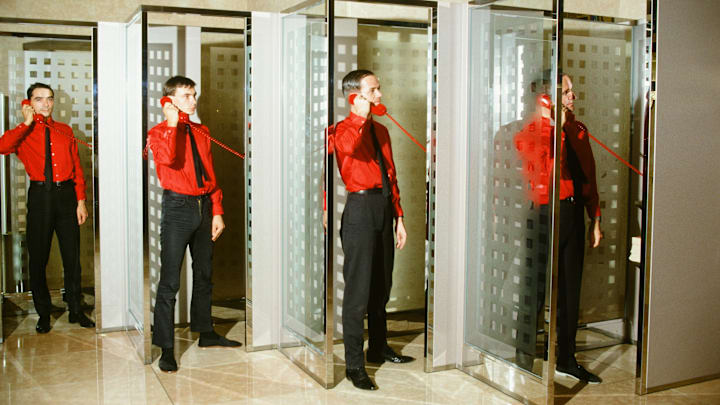Chakra
On the other end of the musical spectrum is a band who were (and is still) a masterclass in genre-bending. Formed by guitarist Aya Itakura and proto-Björk vocalist Mishio Ogawa in 1978, Chakra was an exciting mix of synthesizer-heavy new wave, fused with prog rock, and traditional Japanese and Okinawan folk music. If that sounds like a discordant bundle, nothing could be further from the truth.
Their self-titled Chakra was released in 1980, drenched in Oriental elements, some of which were even a bit too obvious (check out the font and the band’s clothing on the album cover). But instead of falling into the enka trap, each track is an unprecedented experience, all elevated to the heavens by Itakura’s riffs and Ogawa’s otherworldly vocals, with the latter being the heart and soul.
At times, her warbling pitch posits her as the manic healing woman of a seaside village (“福の種”, “島の娘”, “アイ・アム・ソーロー"), the lonely girl at the bar (“あこがれ”), and bubble-gum technopop princess (“空の友達”. The crowning jewel is the sprawling eight minutes and 22 seconds long “東京スウィート”: a tribute to the nation’s happening capital, with more twists and turns than a dragon’s tail.
If Chakra was the introductory handshake, then 1980s Satekoso was the warm embrace. Aforementioned Hosono Haruomi (from YMO) was the producer, which not only meant a different sound entirely, but one that has gone on to cement the band’s association with new wave (“Free”). Instead of Ogawa’s vocals being the central defining element, they meld seamlessly with the band’s advanced songwriting and hooks.
That’s not to say that the band is any easier to nail down. Between songs about cat-like onomatopoeia (“Myun Myun”), a laughably long title about death (“Korekara Shindeyuku Subete No Seimeitai Ni Sasageru Ute”), and faux-Chinese opera (“Itohoni”), Chakra is still plenty unpredictable.
Perhaps the most noticeable is the fantastic production: each track slaps with bass and percussion, giving both Itakura and Ogawa the perfect playing field to thrive.
Moreover, Hosono’s experience with experimentation and effects comes to the surface (“III”, “Hohoemu”), making Satekoso a slightly more thrilling and professional trip than its predecessor.
In 1983, Chakra’s third and final album, Praise in the South Seas (南洋でヨイショ), is a pleasant union of all the elements in the band’s toolbox, complete with hairpin turns (ペリカン), tribal beats (“私と百貨店”), and Ogawa’s trademark warble. That being said, for the most rewarding experience, start from the beginning of Chakra and make the trip to the end of Praise in the South Seas.
Continued on next slide...
